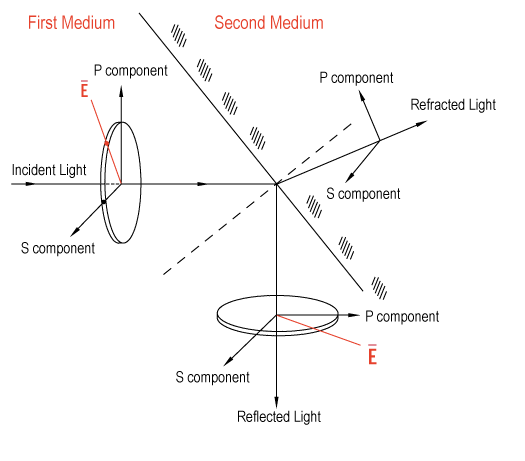Tech Notes » Polarization Tutorial
|
Light, as the electromagnetic wave, is characterized by its power, wavelength (frequency), phase and polarization state. The vectors (Ē and H) of the electric and magnetic fields of the Tranverse Electro-Magnetic (TEM) wave are perpendicular to one another and orthogonal to the direction of light energy propagation (Pointing Vector P). Polarization Polarization characterizes the direction of the Electric field vector of light. Any arbitrary polarized beam may be resolved into two orthogonal components along the reciprocally perpendicular Basis Vectors laid in the ĒH plane defined by the asymmetry of the media (or geometry of propagation). Two important cases of the Basis Vectors definition are: |
||||||
|
1. Propagation through the anistropic medium. One of the Basic Vectors (seen below as "e" – extraordinary) is along the projection of the medium's optical axis on the ĒH plane. Another (see below: "o" – ordinary) is perpendicular to the first one in the same plane. |
||||||
|
||||||



